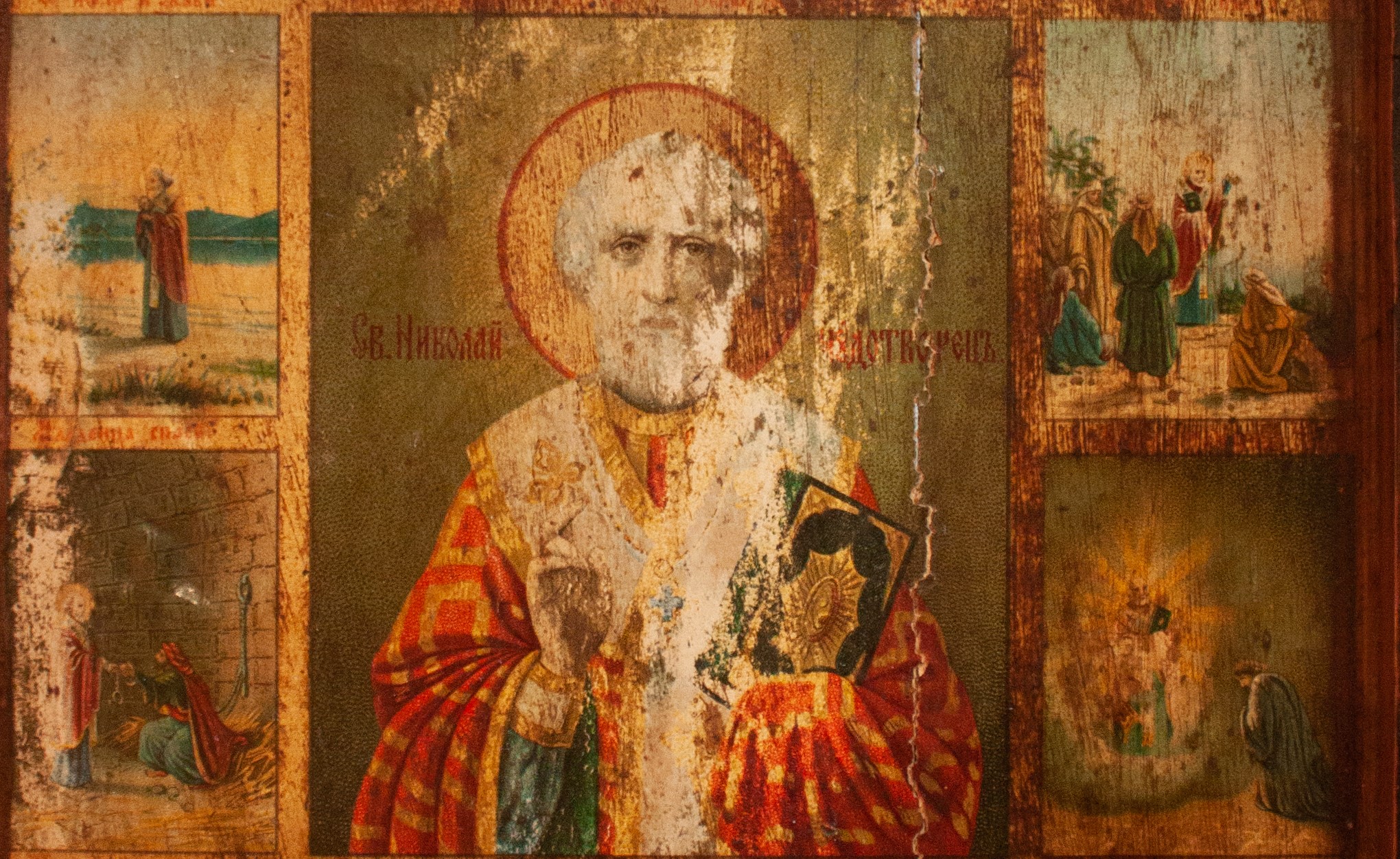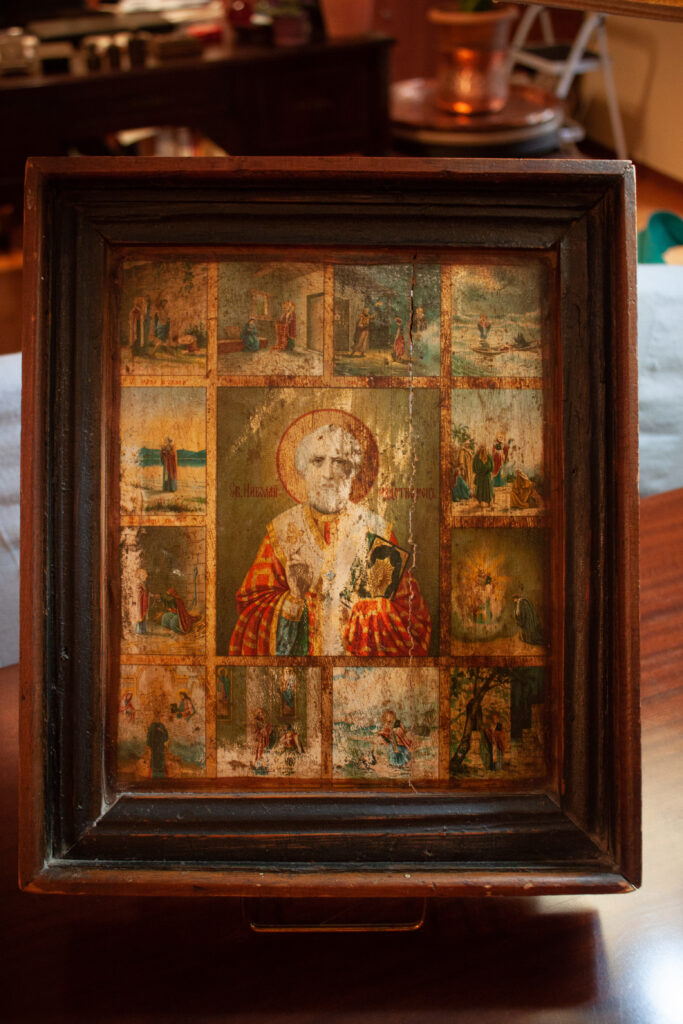According to family history, Anna Raizopoulou was a particularly pious woman who lived an ascetic life. After 1922, she found herself displaced from Apollonia or Apolloniada, Prusa (today’s Gölyazi, Bursa) to Thessaloniki. Anna managed to bring several icons with her. She donated most of them to a small church in Neoi Epivates, Thessaloniki, from where they were later lost, but she did keep a few icons for herself.
The family initially settled in Nea Apollonia, Thessaloniki. It was probably there that her son, Andreas, met Kallino Delimpachari from Makrychori (Bakirköy), Constantinople. They got married and lived in Thessaloniki where Andreas, a shrewd businessman, became a building contractor. Kallino became known as Kalliopi, an easier, more common name, and lived with her mother-in-law for years. Influenced by Anna’s devoutness, it was Kallino who ended up preserving her icons.
Andreas and Kallino had four children, Anna, Marika, Thanasis, and Dimitris. Anna married Panagiotis Almpanis and the couple had two children, Margarita and Nikos. Margarita remembers how her grandmother did not want to talk about old times and her life in Makrychori, but when she did, she used the word ‘home’. Margarita asked her grandmother to pass the icons on to her when she would no longer need them and Kallino agreed. After her death, Kallino’s three icons stayed with Margarita. The third icon is a relatively newer one. It is painted in the Russian style and depicts Agios Nikolaos.


